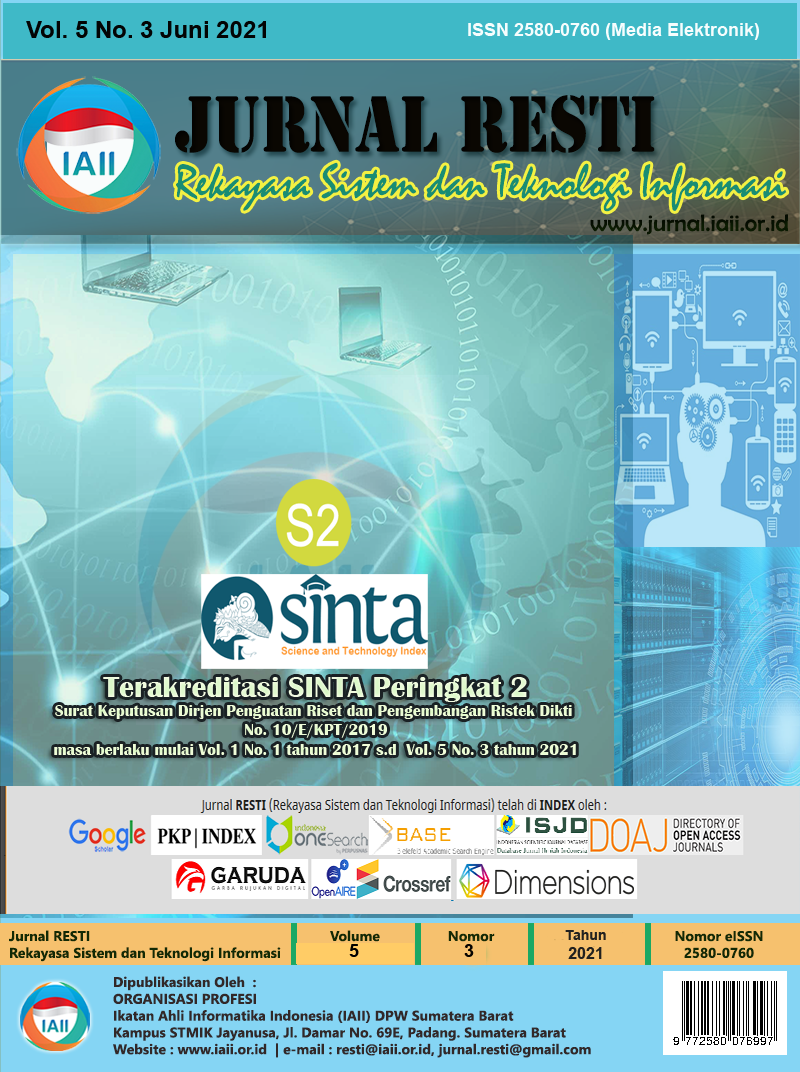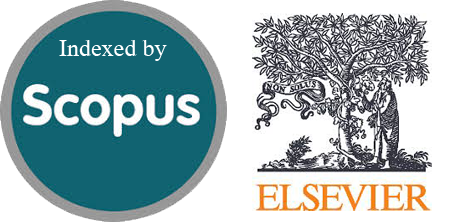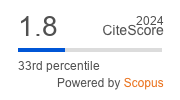Perbandingan Metode KNN Dan LBPH Pada Klasifikasi Daun Herbal
Abstract
Herbal plants are plants that can be used as alternatives in natural healing of diseases, parts of plants that can be used such as roots, stems, tubers and leaves, in Southeast Sulawesi there are currently 1000 herbal plants and 10 sub-ethnicities that have been inventoried, according to research conducted by the Ministry of Health (Kemenkes). Indonesia has 6,000 - 7,000 medicinal plants, Southeast Sulawesi Province has a variety of herbal plants that are not found in other areas, such as Komba - Komba or Balakacida (Chromolaena Odorata). However, in the present era, the number of herbal plants is not accompanied by the knowledge of the community about the herbal plants themselves. The purpose of this study is to classify herbal plants and to compare the performance results of the K-Nearest Neighbor Method and Local Binary Pattern Histogram. From the test results of five types of herbal leaves in Southeast Sulawesi with a total of 100 data sets, the accuracy value for the K-Nearest Neighbor (KNN) method is obtained total accuracy value is 97,5%, while for the Local Binary Pattern Histogram (LBPH) method the total value is 94% of total accuracy value.
Downloads
References
Indrawati, Y. Sabilu, and P. F. Zainal, “Keanekaragamaan dan pemanfaatan tumbuhan obat tradisional pada masyarakat di Kelurahan Lipu Kecamatan Betoambari Kota Baubau Provinsi Sulawesi Tenggara,” Biowallacea, vol. 2, no. 1, pp. 204–210, 2015.
“seminar-herbal-bagi-akademisi-kedokteran-upaya-menggali-potensi-tanaman @ yogyakarta.kompas.com,” [Online]. Available: https://yogyakarta.kompas.com/read/2019/07/29/17395341/seminar-herbal-bagi-akademisi-kedokteran-upaya-menggali-potensi-tanaman.
F. S. Ni’mah, T. Sutojo, and D. R. I. M. Setiadi, “Identifikasi Tumbuhan Obat Herbal Berdasarkan Citra Daun Menggunakan Algoritma Gray Level Co-occurence Matrix dan K-Nearest Neighbor,” J. Teknol. dan Sist. Komput., vol. 6, no. 2, pp. 51–56, 2018, doi: 10.14710/jtsiskom.6.2.2018.51-56.
F. Liantoni, “Klasifikasi Daun Dengan Perbaikan Fitur Citra Menggunakan Metode K-Nearest Neighbor,” J. Ultim., vol. 7, no. 2, pp. 98–104, 2016, doi: 10.31937/ti.v7i2.356.
R. Rahmadewi, E. Purwanti, and V. Efelina, “Identifikasi Jenis Tumbuhan Menggunakan Citra Daun Berbasis Jaringan Saraf Tiruan (Artificial Neural Networks),” J. Media Elektro, vol. VII, no. 2, pp. 38–43, 2018, doi: 10.35508/jme.v0i0.427.
“Morfologi_daun @ id.wikipedia.org.” [Online]. Available: https://id.wikipedia.org/wiki/Morfologi_daun.
M. Astuti, F. D., & Guntara, “Analisis Performa Algoritma K-NN Dan C4 . 5 Pada Klasifikasi Data Penduduk Miskin,” Jurti, vol. 2, no. 2, pp. 135–142, 2018.
“cc4c88fca4aa9bf877b621b40dc327f68aee4f12 @ www.advernesia.com.” [Online]. Available: https://www.advernesia.com/blog/data-science/pengertian-dan-cara-kerja-algoritma-k-nearest-neighbours-knn/.
R. Sistem, P. N. Andono, and E. H. Rachmawanto, “JURNAL RESTI Evaluasi Ekstraksi Fitur GLCM dan LBP Menggunakan Multikernel SVM,” vol. 1, no. 10, pp. 1–9, 2021.
A. Novitasari, E. P. Purwandari, and F. F. Coastera, “Identifikasi Citra Daun Tanaman Jeruk Dengan Local Binary Pattern Dan Moment Invariant,” J. Inform. dan Komput., vol. 3, no. 2, pp. 76–83, 2018.
F. Y. Rahman, “Pendeteksian Citra Wajah Manusia Dari Berbagai Posisi Menggunakan Local Binary Pattern (Lbp),” Technol. J. Ilm., vol. 8, no. 4, p. 257, 2017, doi: 10.31602/tji.v8i4.1126.
M. F. Rahman, D. Alamsah, M. I. Darmawidjadja, and I. Nurma, “Klasifikasi Untuk Diagnosa Diabetes Menggunakan Metode Bayesian Regularization Neural Network (RBNN),” J. Inform., vol. 11, no. 1, p. 36, 2017, doi: 10.26555/jifo.v11i1.a5452.
Copyright (c) 2021 Jurnal RESTI (Rekayasa Sistem dan Teknologi Informasi)

This work is licensed under a Creative Commons Attribution 4.0 International License.
Copyright in each article belongs to the author
- The author acknowledges that the RESTI Journal (System Engineering and Information Technology) is the first publisher to publish with a license Creative Commons Attribution 4.0 International License.
- Authors can enter writing separately, arrange the non-exclusive distribution of manuscripts that have been published in this journal into other versions (eg sent to the author's institutional repository, publication in a book, etc.), by acknowledging that the manuscript has been published for the first time in the RESTI (Rekayasa Sistem dan Teknologi Informasi) journal ;








